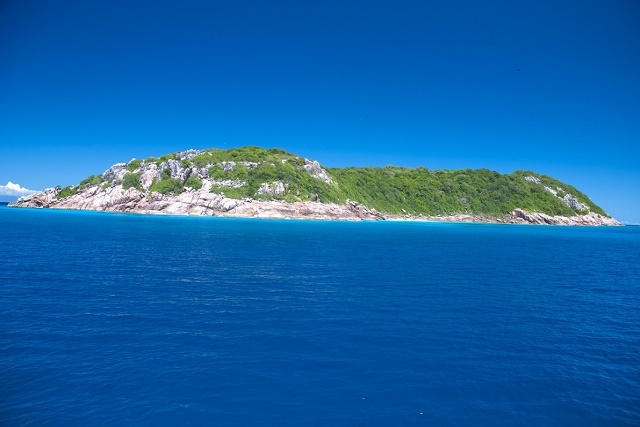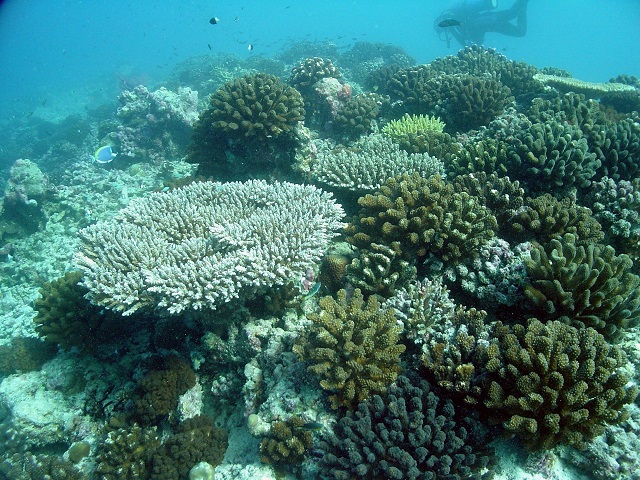Proposed extension of Aride’s boundaries aims for more protection of the Seychelles special reserve

Aride is the northernmost granitic island of the Seychelles archipelago of 115 islands. (Gerard Larose, Seychelles Tourism Board)
(Seychelles News Agency) - Located only 10 kilometres away from the Seychelles second most inhabited island of Praslin, Aride, one of the Indian Ocean archipelago's island that is self-sustainable in energy production and consumption, has enjoyed the status of being a special reserve since 1975.
The status designated by the Seychelles government came some six years after the island was purchased by Christopher Cadbury in 1973, for a British-based conservation organization, the Society for the Promotion of Nature Reserves [today known as the Royal Society for Wildlife Trusts, RSWT].
Since 2004, the island is being managed by the Island Conservation Society, ICS, a not-for-profit organisation registered in Seychelles since 2001, which was given the opportunity by RSWT to be the guardian of the nature reserve, with a long list of conservation projects to accomplish as part of a three-year lease.
Upon successful completion of the conservation targets mainly geared towards protecting and rehabilitating the flora and fauna of the former coconut plantation, RSWT passed on the freehold of Aride to ICS in 2008.
What was once described as a ‘pile of rocks’ by French explorers, Aride is today home to only a handful of rangers and volunteers but also the breeding ground of millions of sea birds which in turn supports a reputed population of skinks and other species of insects and amphibians.
|
|
| Aride which covers an area of roughly 68 hectares, is 1.6 km long and 0.6 km wide. The island hosts one of the most important seabird populations in the Indian Ocean with more breeding species than any other island in Seychelles. (Seychelles News Agency) Photo License: CC-BY |
Already actively involved on other islands of the Seychelles archipelago such as Silhouette and the Alphonse Atoll, ICS brought in its vast experience doing conservation work to Aride, turning it into a predator-free island with enough greenery to cater for the survival of five endemic bird species of Seychelles, including the Seychelles Warbler and Magpie robin.
In the light of all these success stories, the Seychelles Ministry of Environment, Climate Change and Energy, recently published a proposal to extend the boundaries of Aride allowing for more protection of the other side of the island; its abundant marine life.
The notice which has appeared in daily newspaper Seychelles Nation recently, is in line with the National Parks and Nature Conservancy Act of 1969, which provides for public inspection prior to an area being declared as protected.
“The Ministry responsible for environment wants to extend the boundaries of all existing Special Reserves as part of its efforts to promote environment conservation....We came up with the proposal and sent it to ICS for their input and they agreed that the expansion will be beneficial for both conservation and protection purposes,” the environment ministry’s legal officer Sharon Gerry told SNA in an email.
The boundaries of the Aride Special Reserve currently extends to 400 metres from the high water mark, and the extension being proposed is 600 metres to add up to 1 kilometre from the high water mark.
 |
| According to the ICS chairman an enlarged protected area will certainly make it a lot easier to identify poachers. (Seychelles News Agency) Photo License: CC-BY |
Such an initiative is expected to benefit an abundant and rich marine life that surrounds the island.
“The coral reef around Aride supports over 450 species of fish and fish communities are quite healthy. The large numbers of corallivores (Butterfly fish), piscivores (Snappers, Groupers, Jackfish) and invertivores (Triggerfish, Wrasse, Emperors, Sweetlips) are respectively indicative of coral recovery, low fishing pressure and species known to feed on black-spinned sea urchins and Crown-of-thorns starfish which can be detrimental to coral reefs in great densities…,” Pierre-Andre Adam, the Science and Projects Manager at ICS told SNA in an email interview, adding that the hawksbill and some green turtles also use the coral reef for foraging and protection from predators.
Seychelles provides feeding grounds for five species of marine turtles but the islands are nesting grounds for only two species - the hawksbill and green turtles.
Adam notes however that the reefs around Aride have not been spared the effects of coral bleaching incidence that also affected other areas of the Indian Ocean archipelago.
“...[The reefs] support a thriving acroporid (branching hard coral) population, showing good recovery potential, and it is slowly bouncing back from 3 minor coral bleaching events in 2002, 2003, and 2004...”
According to Adam, a bathymetric survey [the study of underwater depth of lake or ocean floors] was also conducted earlier this year which has “revealed some very interesting underwater features [providing] the ideal and complex habitat for a range of marine life.”
 |
| Over 400 species of fish, from Whale Sharks to Flying Fish have been recorded in the waters surrounding Aride. (Pierre-Andre Adam, Island Conservation Society) Photo License: All Rights Reserved |
Although snorkelling is encouraged on Aride, depending on the season, strong undercurrent often causes the sea around the south side of the island, where visiting boats moor to appear rough, with exposed reef being visible all along the powdery beach of the island.
This however, has not reduced encroachment in the past, especially during the breeding season of the sooty terns, a seabird which lays speckled eggs from June to July; which are considered a delicacy among the Seychelles population of around 93,000.
Sea cucumber harvesting has also reduced the numbers of the species drastically around the reefs of the island and in spite of increased patrols around the island made up of some 68 hectares of land, activities such as octopus fishing is still an on-going problem faced by the management of the special reserve.
“An enlarged protected area will certainly make it a lot easier to identify if poachers are within the protected areas or not,” says the Chairman of the board of ICS, Adrian Skerrett in e-mail to SNA, adding that current boundary limitation can sometimes make it difficult to prove if any act of poaching has occurred.
ICS has said that the new move will not affect mooring of chartered boats, which on weekdays are seen approaching mooring points where only the boat belonging to the island is allowed to collect passengers and take them to and from Aride.
 |
 |
 |
| The abundant marine life surrounding the reefs of Aride island that will be more protected with the proposed extension of the island's boundaries. (Pierre-Andre Adam, Island Conservation Society) Photo License: All Rights Reserved |
For those not too keen on discovering the island’s feathery inhabitants and whose heads are not turned by the mysterious and gorgeous Wright's Gardenia a small plant with white speckled flowers that grows only on the island, this new proposal, if approved, could lead to even more interesting discoveries for nature and marine enthusiasts visiting Aride.
Interested parties had between October 14 to November 23, to view maps and other documents pertaining to the proposal detailing the importance of the extension of Aride’s boundaries at the premises of the Seychelles Ministry of Environment, Climate Change and Energy on the main inhabited island of Mahé as well as on Praslin.
“We [will] compile the representations received and address each of them accordingly. Afterwards, we [will] compile all the relevant documents and send it to [the] department of legal affairs for finalization, and if all is in order, the newly proposed area will be declared as a Special Reserve,” says Gerry.
Aride is among five existing Special Reserves in Seychelles, which also include the Cousin Island Special Reserve, designated in 1975, La Digue Veuve Special Reserve, designated in 1991, Ile Aux Recifs Special Reserve designated in 2010 and the Aldabra Atoll Special Reserve which was designated in 1981.
A similar re-designation is also being proposed for the Aldabra atoll, one of Seychelles UNESCO sites, to ensure that an additional 3.5 square kilometres of this very important reef ecosystem is included as part of the legal boundary of the Special Reserve.






